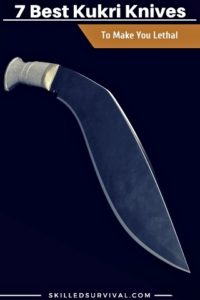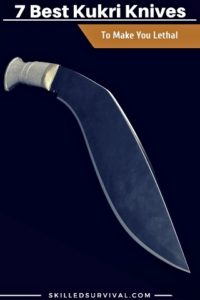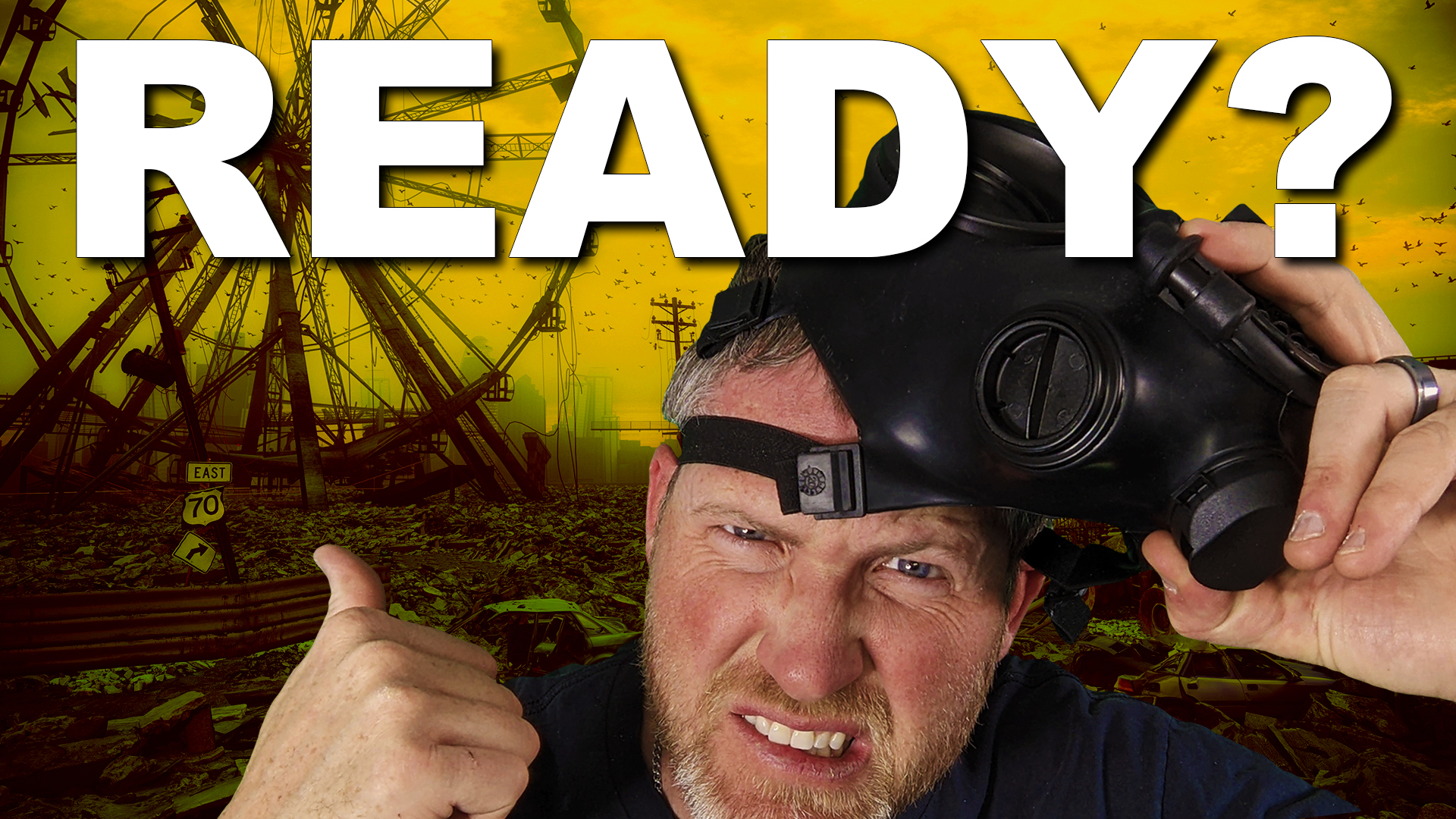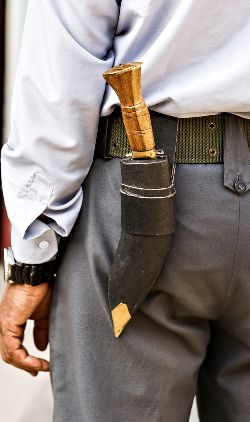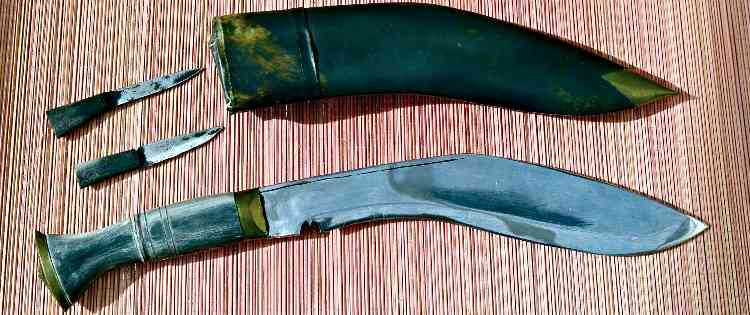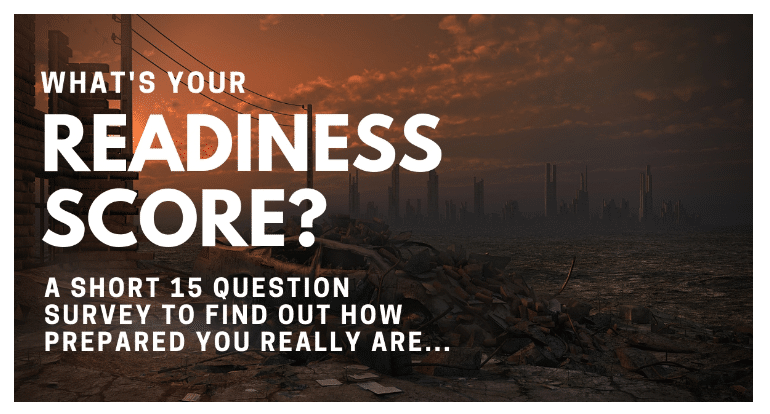Are You On The Hunt For A Kukri Knife? If So, You’re In The Right Place
The Nepalese Kukri Knife is one blade design that stands out for its versatility and unique profile.
It’s equal parts sword and chopping blade.
It’s a knife that’s larger than a typical survival knife but more compact than a survival machete.
That’s why a high quality Tactical Kukri is my new favorite blade option.
So, if you want a larger blade to add to your survival gear – it’s time to learn more about this unique blade.
Today, I’m going to use my Engineering, Design, and Gear Review expertise to discuss the following topics:
TABLE OF CONTENTS
Best Kukri Knives For Sale Today
What Is A Kukri Blade Anyway?
Best Kukri Features To Look For
Are You Ready For The Tough Times Ahead? Take My 60 Sec Quiz To See If You’re Part Of ‘The Fragile Masses’ Or Not… Start Quiz Now!
Best Kukri Knives On The Market Today
Condor Tools & Knives 60217 Heavy Duty Kukri Knife (10-Inch)
This Condor Kukri features a 10″ blade and a nearly 6″ handle.
This blade is a little on the small side but well-constructed and made of quality materials.
It doesn’t arrive as sharp as possible, so be sure to have a high quality knife sharpening stone ready.
It weighs in at nearly 2 lbs. So it does have a good bit of momentum, and the flared handle helps keep all that momentum under control!
PROS
- It uses quality high-carbon steel
- Very compact for agile combat
- Includes a good leather sheath
CONS
- Wood handles can split in heavy use
- No metal bolsters or butt cap
↓ Condor Heavy Kukri – Test ↓
Ontario 6420 OKC Gurkha Knife (Black)
This Ontario Kukri has a shallower blade angle and flatter belly than most, making it better suited for camping meal prep and camp chores vs. combat or chopping wood.
It weighs in at just over 1lb, which means it would also be a little light for chopping.
Several people have noted that the sheath isn’t the best, but it appears newer models are much improved.
PROS
- Suitable for kitchen chores (butchering, light chopping, etc.)
- A black finish helps with corrosion on the blade
CONS
- Sheath quality is lacking
- Older models have a welded tang; this is a possible source of cracking
↓ OKC Ontario Kukri In 1095 Made In USA Knife Review ↓
↓ Ka-Bar Combat Kukri Overview ↓
EGKH Genuine Full Tang Khukri Knife
The EGKH WWI Kukri is on the high end of the knife price range. But it’s a recreation of an early model carried by Gurkha troops in Burma during WW1.
It is a very classic-looking Kukri with a rosewood handle and traditional styling.
It also comes with a sheath containing a small knife (karda) and a sharpening tool (chakmak).
And, at over 1/3″ thick at the spine and nearly 2 lbs, this is a BURLY build.
PROS
- Includes a quality sheath with additional tools
- Well-built and balanced
- Heavy for chopping
CONS
- Will need some regular care and maintenance
- Expensive
↓ EGKH Jungle Kukri Review ↓
CRKT KUK Fixed Blade Knife Carbon Steel
A more utility option, the CRKT KUK is an excellent option for a tool that will see hard use.
Unlike many Kukri models, the KUK has an extended drop point.
This drop point makes it possible to do more precise work with the blade’s tip, but it also makes it slightly more prone to damage.
Now, the thermoplastic handle isn’t pretty (just saying).
But it’s durable and provides an excellent grip, which wins in the end anyway.
PROS
- Good length
- Pointed tip for precise work
CONS
- Lightweight won’t chop well
- Quality control on factory sharpening isn’t great
↓ CRKT KUK Kukri Review – Field Testing ↓
Condor K-Tact Kukri Knife Army Green
The Condor K-Tact kukri is a solid knife in a 15″ length.
It’s sturdy enough for chopping and batoning but still light enough that it’s not a burden in your hand or on your tactical belt.
The Micarta handles are grippy and corrosion-free, while the stainless butt cap is great for pounding in stakes (or cracking nuts and shells).
PROS
- Micarta, Kydex, and other corrosion-resistant materials
- Sharp from the factory
- A deep blade angle makes for efficient chopping
CONS
- Quality control on the sheath isn’t always great
- Expensive
↓ Condor K-TACT Kukri Survival Knife Review ↓
Cold Steel All Purpose Kukri Plus Machete
The Cold Steel 97KMPS kukri is a steal at the price this was listed when this article was published.
The full tang provides durability and solid chopping, while the anti-corrosion blade treatment helps keep the rust down in wet conditions.
At 18″, it’s a large knife and chops well, but the medium blade angle is also suitable for kitchen and household tasks.
PROS
- Good size, weight, and balance
- The handle is durable, though a little smooth
CONS
- There are two versions of this blade (one of which seems to have lesser quality steel and poor factory QC)
↓ Cold Steel Kukri Plus Machete Review ↓
What Is A Kukri Knife Anyway?
The Kukri blade originated in northern India and Nepal among the Gurkhas people.
And this blade shape is sometimes called Kukri, Khukri, or Kukkri, the actual original Nepali name is Khukuri.
Traditionally, a Kukri was used by ancient farmers and laborers.
But it’s long been associated with:
- The Nepalese Army
- The Royal Gurkha Rifles of the British Army
- And all Gurkha soldiers serving around the world
In fact, the blade is so well-recognized many refer to the Kukri as a “Gurkha blade” or “Gurkha knife.”
↓ Gurkha Kukri – More Info About Their Historical Use and Design ↓
Knife & Blade Design
Forward Curve
This type of knife features a heavy blade with a distinct forward curve.
This design makes it ideal for chopping.
The forward curve moves the center of mass in line with (or even ahead of) the handle.
This allows for momentum build-up and helps carry more slicing power through a target.
This destructive power puts its heads and shoulders above similarly sized knives.
This results in better chopping than even a machete.
And in combat, it inflicts deep, fatal wounds and can even break bones.
Decreased Wrist Angle
It also decreases the wrist angle during the swing.
This helps to reduce fatigue and increase the stability of the user’s grip.
All these unique features are why the Kukri is such a widely used tool today.
Recurve Blade
In addition to the forward curve of the blade, it features a “recurve” blade design.
A recurve design starts with a narrow blade profile near the handle.
And then it widens into a deep belly before tapering to the point.
This design forces the center of mass farther from the handle.
Again, it further increases swing momentum and provides a more devastating blow.
Tangs
Now, most have a partial, hidden tang.
But military models often feature a full tang.
Full tang design escalates the knife’s weight and cost.
However, it also boosts overall strength dramatically.
Blade Thickness
Now, there are significant local variations in size and blade thickness.
However, the blade is generally about 1/4″ thick at the handle and tapers out to the tip.
Knife lengths of 16″-18″ overall are typical for utility models.
But ceremonial versions are often longer to accommodate decoration.
Handle Design
With such a sturdy build, the handle of a Kukri must help secure your grip to prevent slipping.
You’ll generally find traditional ones made from hardwood or water buffalo horn.
But commercial versions use metal, rubber, or other modern synthetic material.
These synthetic fabrics have more durability and attachment options.
Most of these knives feature a flared base to prevent the hand from slipping off the end.
This safety flare is especially vital during heavy chopping or combat use.
Many also feature metal bolsters.
These provide additional durability, and a metal butt cap can act as a club or improvised hammer.
Sheath Design
Military model sheaths are often MOLLE-compatible.
MOLLE provides you the ability to add a wide range of small tools to the outside of the sheath.
It’s a bonus feature, depending on how you plan to carry your Kukri.
As A Way To Introduce You To Skilled Survival, We’re Giving Away Our
Ultimate Survival Gear Checklist. Click Here To Get Your FREE Copy Of It.
Best Kukri Knife Features To Look For
There are many features to look for when buying a Kukri Knife.
Blade Shape
Kukri’s come in various blade angles, dramatically affecting the knife’s handling.
A steeply angled spine (i.e., more “hooked”) will chop brush and thick items best.
A straighter design is best for preparing food and other delicate tasks around camp.
Blade Length
A longer blade will swing with more momentum but is not as agile.
However, shorter models will suffer from weaker chopping performance.
But it will be more maneuverable as a combat weapon.
Overall Weight
Another factor affecting the swing and cutting force is the total weight.
This factor can play a huge role in handling.
A heftier blade will swing more slowly but with superior momentum.
A lighter blade can accelerate fast but has less momentum for chopping.
Blade Material
The choice of materials is one of the most central purchase decisions.
There are generally 2 blade material options in knife making: Stainless Steel Vs. Carbon Steel.
Each of these materials has its pros and cons.
1. Stainless Steel
Stainless steel contains a higher percentage of chromium and vanadium. This molecular structure makes it corrosion-resistant.
Unfortunately, it also makes it less durable than other steel alloys.
And less durability translates into more chipping and breakage.
Also, stainless steel is a hard metal. And hard metals can hold a sharp edge well.
But makes sharpening difficult without specialized tools.
Overall, stainless steel is hard to recommend except for special situations.
So, unless corrosion is a bigger threat than other forms of damage; get a carbon steel blade.
2. High Carbon Steel
Unlike stainless steel, high-carbon steel (as you can probably guess) contains a higher percentage of carbon.
Carbon molecules make steel strong and durable.
On the other hand, it’s more susceptible to corrosion.
So blade upkeep should include keeping it clean, dry, and lightly oiled after each use.
High-carbon steel is also softer than stainless steel.
Soft metals result in more blade edge maintenance.
But, simultaneously, you can achieve razor-sharp edges with any quality sharpening stone and some practice.
Despite this, the durability and ease of sharpening make high-carbon steel the better choice.
This advice goes for most heavy-use blades, a Kukri being in that category as well.
Full Tang vs. Other Designs
A traditional Kukri uses a partial or stick tang.
However, the full tang design is gaining popularity due to its increased durability.
In a full-tang knife, the steel of the blade extends all the way through the handle at full thickness.
This extra thickness eliminates any weakness where the handle attaches to the blade.
The result is a more robust connection and a more reliable tool.
Blade Thickness
In a chopping blade, the thickness of the blade imparts both weight and durability.
Many Kukri blades are over 1/4″ thick at the spine – that’s a very substantial blade thickness.
↓ Benefits Of Carrying A Kukri For Wilderness Survival ↓
As A Way To Introduce You To Skilled Survival, We’re Giving Away Our
Ultimate Survival Gear Checklist. Click Here To Get Your FREE Copy Of It.Final Thoughts
If you ask someone to “draw a knife,” the one that’s drawn will change depending on where you are in the world.
These iconic blades are born from a combination of necessity and culture.
- For example, in North America, the Bowie knife was THE knife of choice on the early Western Frontier.
- And those who travel south of the US/Mexico border will find the Machete in use to this day.
- European countries feature far more swords sized blades. The reason being their prevalence in military conflicts in the pre-industrial age. Back when horse-mounted combat was a dominant strategic advantage, hence, from the steppes of Asia perfected, the Curved Scimitar.
- Japan’s revered Katana supported close-quarters combat.
- And the longer blades of China’s armies were made for fighting opponents in formation.
But the traditional knife of the Nepalese Army is the Kukri Knife.
And it’s a wise choice for both utility and survival.
It’s great for chopping, camp chores, and combat.
So if you’re looking for something between a survival knife and a machete, a Kukri is your best bet.
Jason K.
P.s. Are you ready for the tough times ahead?
Find out now by taking my short Readiness Score Quiz – it’s absolutely free.
Once complete, you’ll know exactly where you stand on the “fragile” vs.” resilient” spectrum.
So click here to start the Quiz….And don’t worry; the questions are so easy a 3rd grader could answer them.
Click on the image to begin the Quiz and find out once and for all if you’re part of “The Fragile Masses” or “The Resilient Few.”
The post Best Kukri Knife For Wilderness Survival & Self Defense appeared first on Skilled Survival.


